I Was Amazed by How Well This Wine Cork Hack Cleaned and Sharpened My Pruners – Now They Cut Like New
Our Editor in Chief took inspiration from the culinary world to discover her new favorite way to spruce up hand pruners and keep them sharp between uses.


I have to confess: I’m not great at keeping up with tool maintenance. While I try to invest in the best-quality equipment I can afford, I don’t always care for it as well as I should. Luckily, well-crafted tools are pretty forgiving – and so when I do get around to sharpening and cleaning, they bounce back quickly. Still, I'd love to make tool care more of an ongoing habit. Recently, I’ve found an unexpected solution – a humble wine cork.
By far, my most-used tool is my hand pruners. I use the same pair for nearly everything – pruning, deadheading, harvesting, and even cutting stems that are definitely thicker than recommended (shh, don’t tell) – and they still work beautifully.
My pruners of choice are the Felco F2 Classic Manual Hand Pruners, available from Amazon. They’re quite a bit pricier than the ever-popular Fiskars Bypass Pruning Shears, but I have zero regrets – they're ergonomic, tough, and nearly indestructible.
I'd recently heard that chefs often use wine corks to keep their knives in top condition, and I was curious: could it work for pruners, too? I gave it a try – and, honestly, it worked even better than I'd hoped.
Why Use a Wine Cork?
Wine corks have a firm yet soft, slightly abrasive surface that makes them perfect for gently polishing blades and removing imperfections. While it won't turn a dull blade into a razor-sharp edge, it can restore a bit of sharpness and remove burrs. Chefs often give knives a polish with corks to keep the edges fresh after each use, and to remove burrs after a sharpening.
However, I heard that it's also possible to use the cork as a firm, abrasive sponge to clean the blade, removing the dull, dirty patina, and even rust. I was keen to give this a try, and was impressed by the results for very little effort. Here’s the process I followed to clean and sharpen my pruners.
1. Gather Supplies
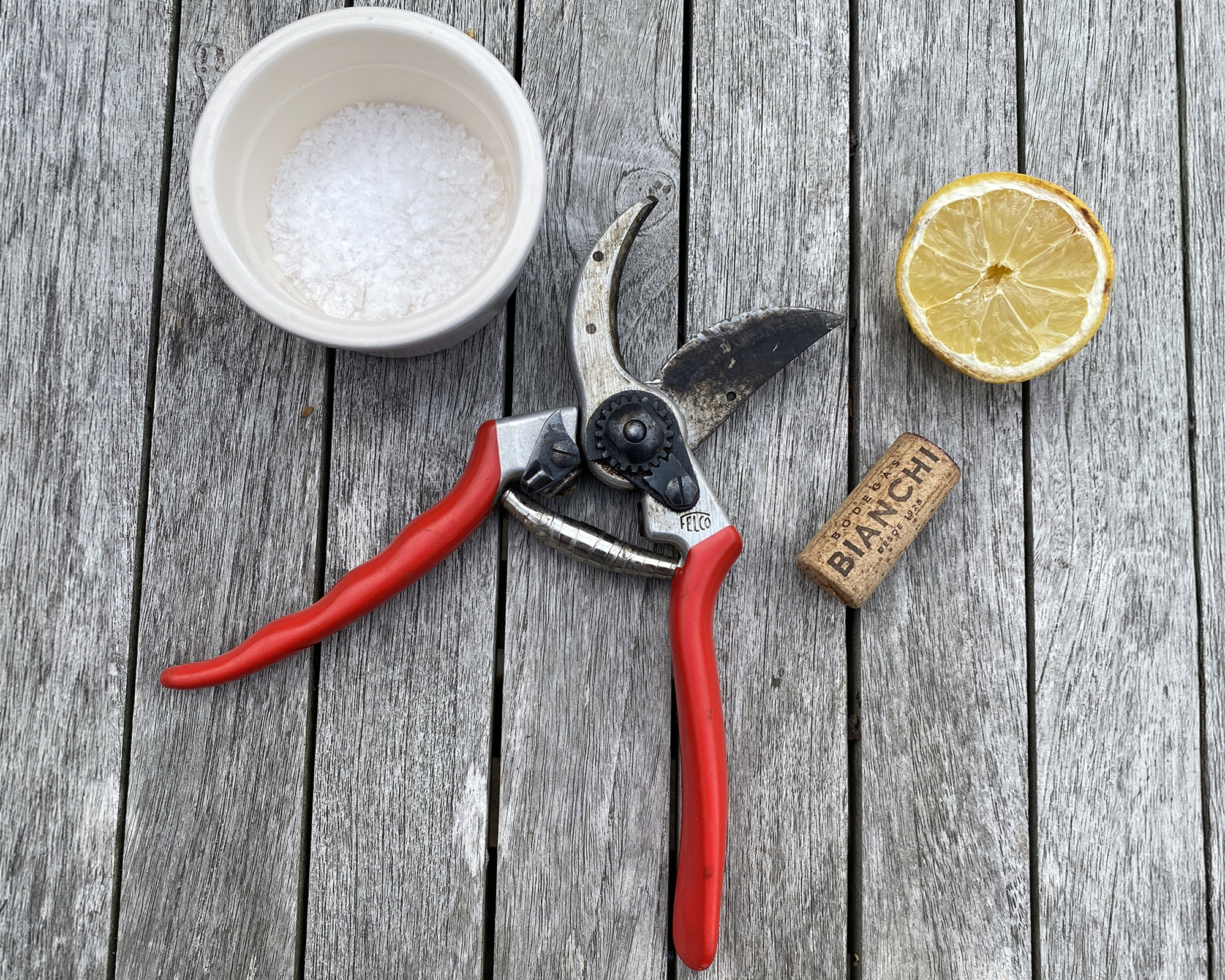
First up, you will need a wine cork – it can be a standard cylinder cork or a champagne-style cork, but it must be real cork. If you want to clean your pruners, then you will also need a lightly abrasive cleaning product such as Bar Keepers Friend, available from Amazon, or keep things natural with lemon juice and coarse seasalt, which is what I tried. If you just want to keep your blade sharp, then skip straight to step 4.
Sign up for the Gardening Know How newsletter today and receive a free copy of our e-book "How to Grow Delicious Tomatoes".
When cleaning garden tools, take care to keep your fingers away from the blade. Mine weren't sharp enough to hurt when I slipped, but you should wear thick gloves when maintaining sharp blades.
2. Clean Blades
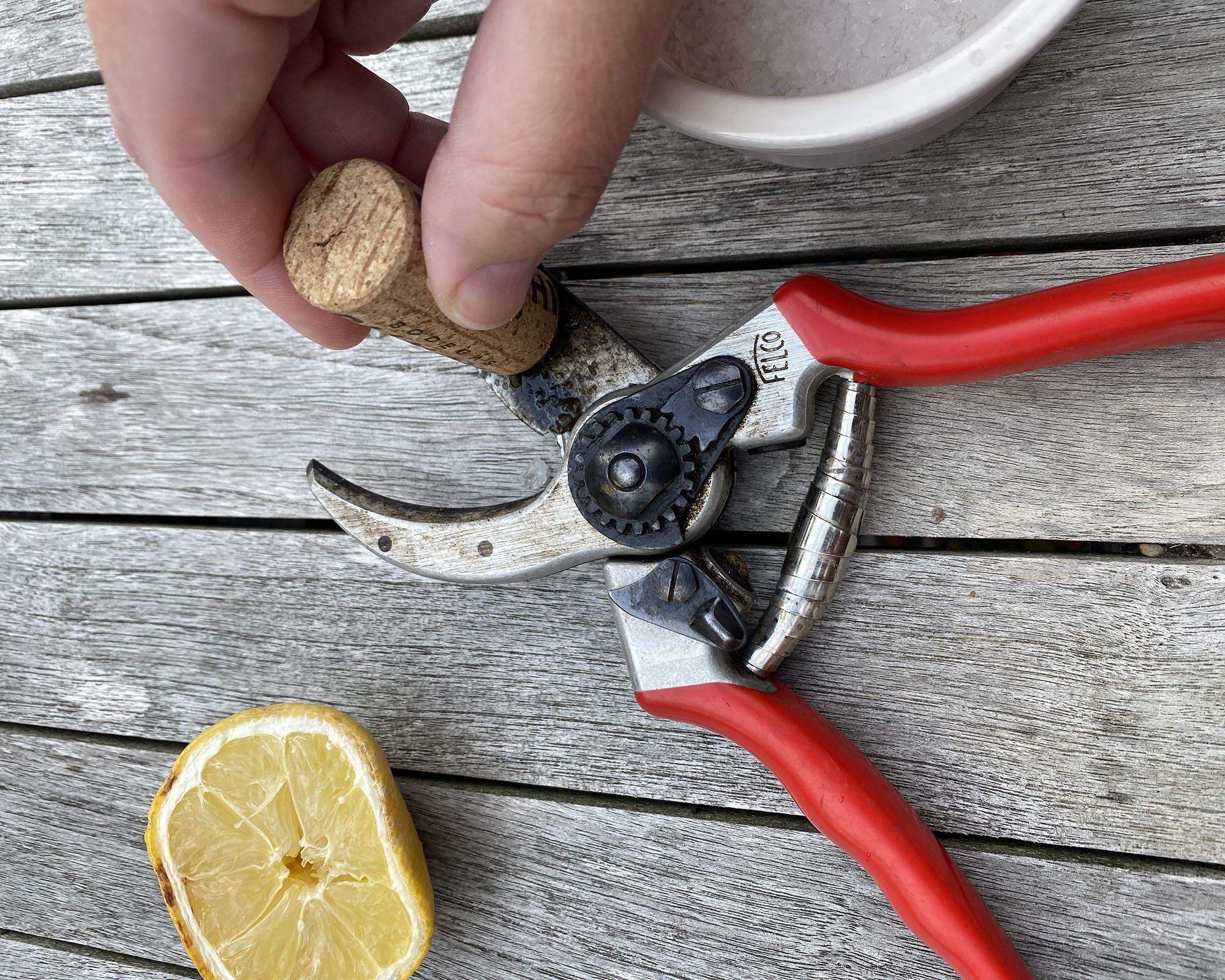
If using Bar Keepers Friend, sprinkle it over the blade, then dip the flat end of your cork in water and work it into the powder. If using lemon and salt, dip your cork into lemon juice followed by salt, and rub it onto the blade. Either way, it’s important to use as little liquid as is necessary to work the product in and clean the pruners, to avoid causing rust in the mechanism. Use a circular motion until the metal starts to come up clean, adding more of your chosen solution as necessary. The circular shape of the cork means it easily gets around curved edges on the pruners.
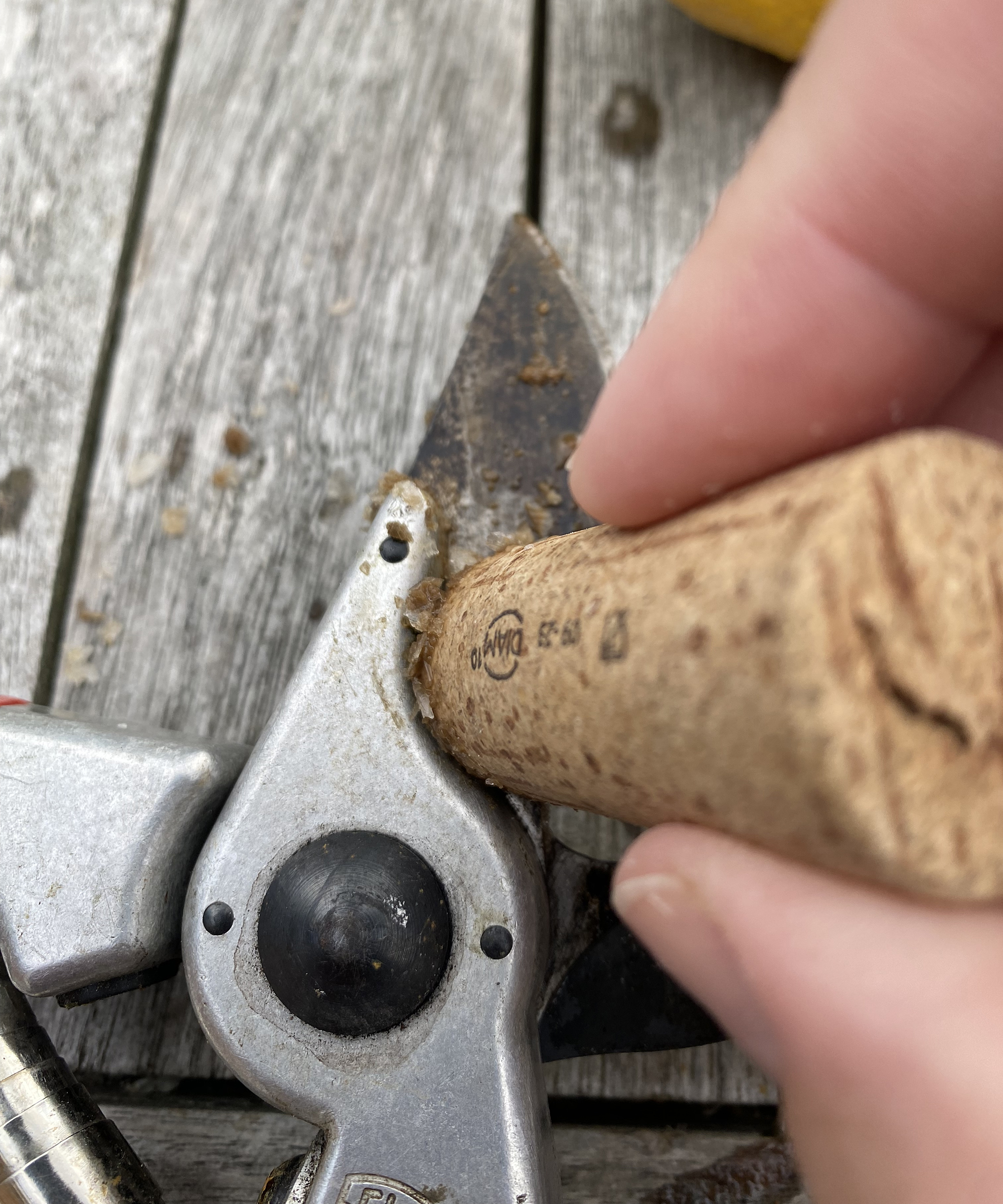
I was surprised at how clean my blades were after working on them for a few minutes. I didn't feel the need to make them look as good as new, so I stopped once I had cleaned off most of the patina.
3. Wipe & Polish
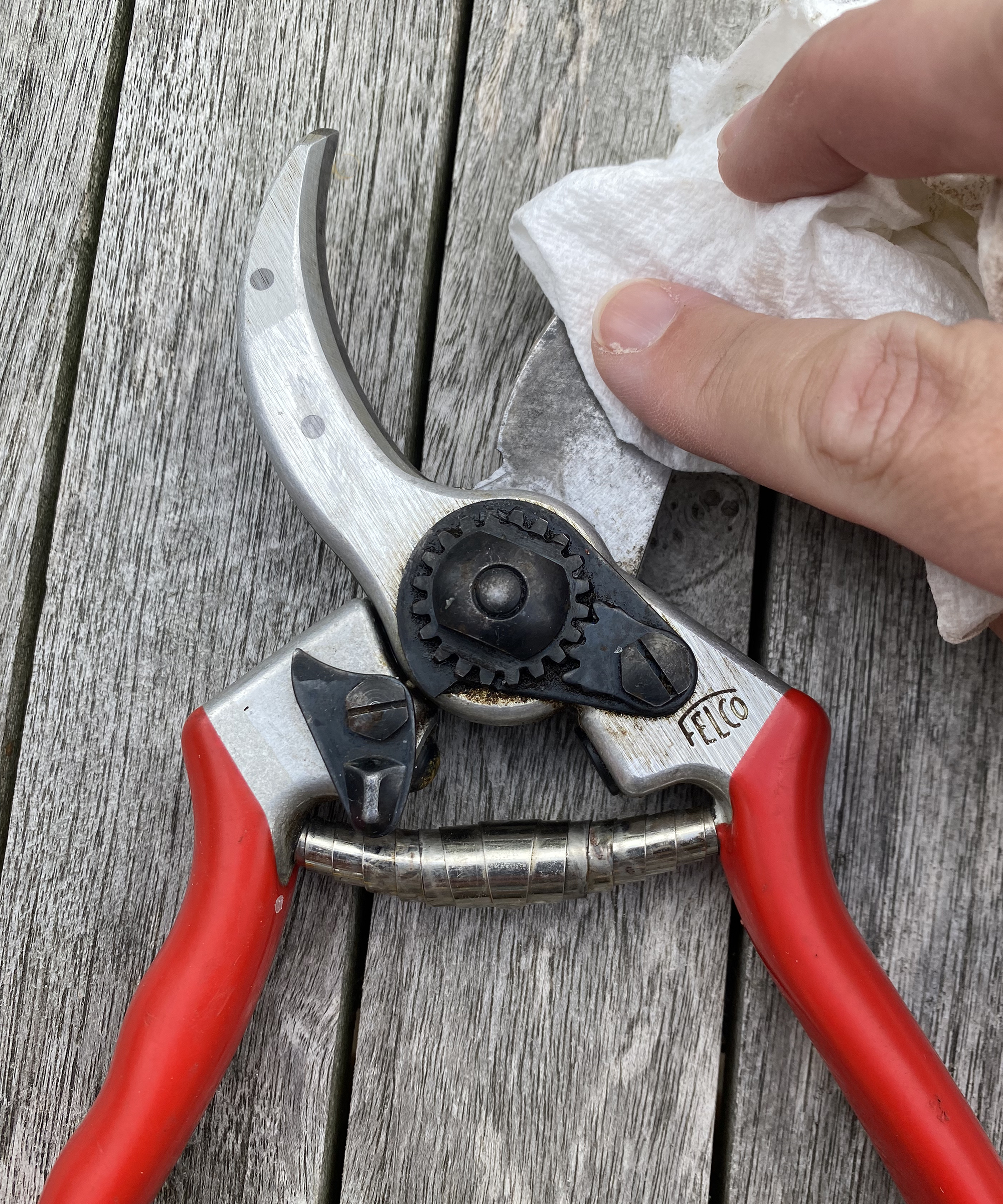
Don’t rinse your pruners with water – use a lightly dampened cloth or paper towel to wipe off the cleaning solution and repeat until clean and dry. Give them a good polish and check that no residue has worked into the mechanism. Leave the pruners open to dry.
4. Sharpen Blade

A cork won’t transform dull blades into razor-sharp edges. However, I was surprised at how much sharper the cutting edge felt once I had given it a good polish with my cork. For a more thorough sharpening, use a tool such as the Sharpal 121N Dual-Grit Diamond Sharpening Stone File, available at Amazon. However, for touch-ups and maintenance, a cork does the job to perfection.
All you have to do is firmly rub the cork along the blade. Either the end or the sides of the cork will work. Use a back-and-forth motion and give it a good polish on both the flat of the blade and along the edge. If you lightly run your finger over the blade, you will see how much sharper it feels after a good polish.
5. Oil Pruners
Finish off your pruner maintenance by applying a light coat of oil, like 3-in-1 oil, available at Amazon, or even a few drops of cooking oil, to the pivot point and blades.
There you have it. I hope you enjoy this wine cork hack as much as I do and that it inspires you to take care of your tools. I was amazed at how much better my pruners looked and performed after sprucing them up. Below is a picture of my refreshed hand pruners in action. Happy gardening!
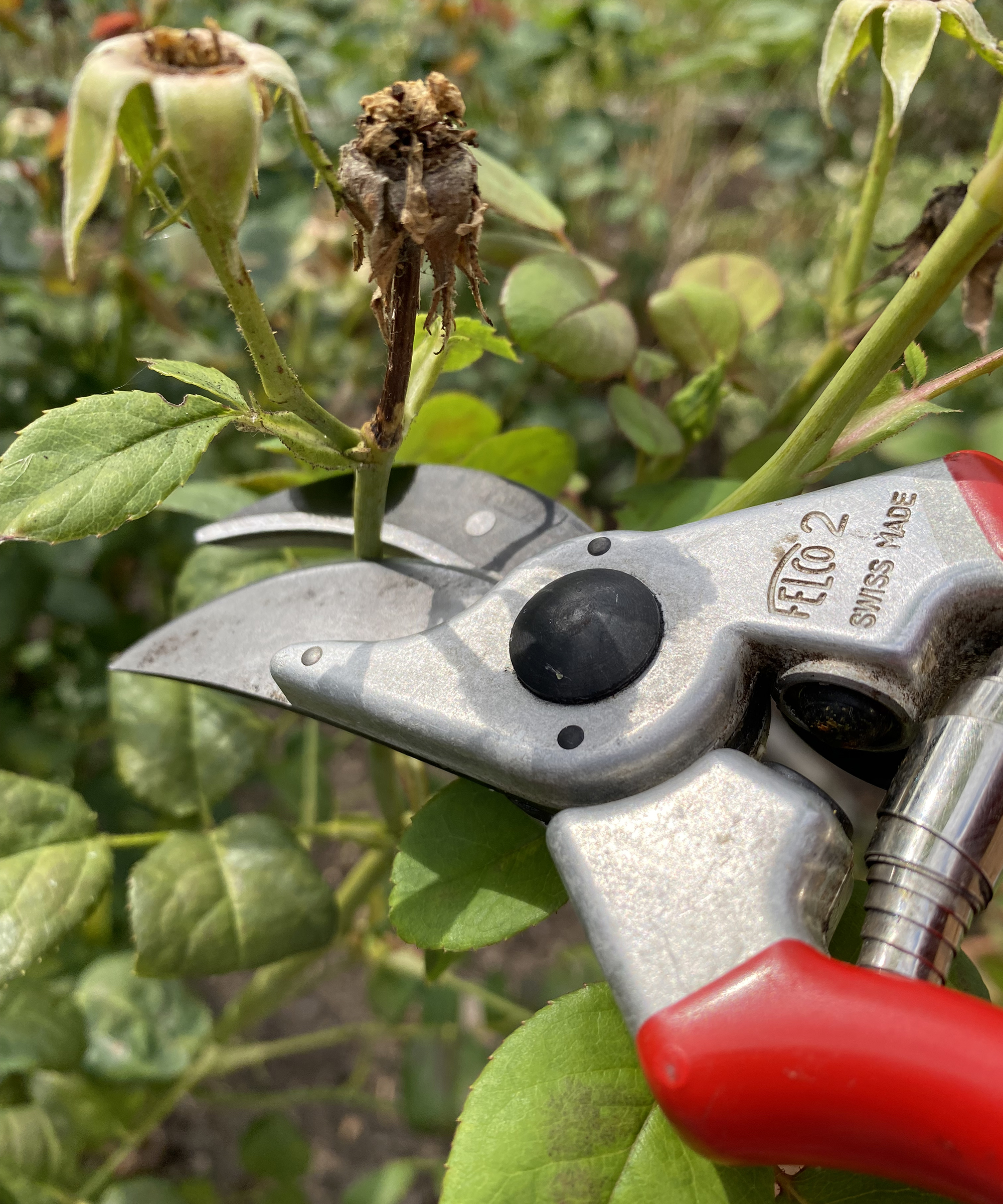

Melanie is an experienced gardener and has worked in homes and gardens media for over 20 years. She previously served as Editor on Period Living magazine, and worked for Homes & Gardens, Gardening Etc, Real Homes, and Homebuilding & Renovating. Melanie has spent the last few years transforming her own garden, which is constantly evolving as a work in progress. She is also a passionate organic home grower, having experimented with almost every type of vegetable at some point. In her home, Melanie tends to an extensive houseplant collection and is particularly fond of orchids.